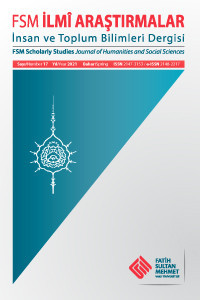Taş Üstüne Yazı Yazmak: Osmanlı’da Matbaa Hattatlığı (1831-1928)
Bu makale, Osmanlı’da matbaa hattatlarının harf devrimine kadarki serencamını ele
almaktadır. Taşbaskının Osmanlı topraklarında kullanılmaya başlanması ile matbaalarda
ihtiyaç duyulan hattatlar büyük matbaalarda kadrolu personel, küçük matbaalarda ise
parça başı yazılar yazarak matbuat alemine dahil olmuştur. Taş baskının ilk yıllarında
müstakil hattatlara yazı başına iş yaptırılırken zaman içinde matbaalar hattat da istihdam
etmeye başlamışlardır. Yüzyıl sonuna doğru Mushaf basımı başta olmak üzere önemli ve
yaygın baskıların devreye girmesi yanında klişeye yazı yazma ile beraber fatura, defter,
kartvizit gibi yeni matbu türlerin yaygınlaşması ile beraber hattatların iş alanları da genişlemiş
ve hattatlar müstakil yazı evleri açmaya başlamıştır. Bu gelişmelerin II. Meşrutiyet
sonrasında matbuat kapitalizminin gelişimini teyit ettiği ve matbaa hattatları da yeni piyasanın
önemli bir aktörü oldukları vurgulanmaktadır.
Writing on the Stone: Printer Scribers in the Ottoman Empire (1831-1928)
This article aims to explore the history of scribes in the printing world. Scribes of
printers were first needed with the using of lithography in the Ottoman World and by the
time they became an actor of printing and publishing world. Printing clerks were first needed
in the Ottoman world with the use of lithography, and in time they became an actor in
the world of printing and publishing. Although they initially wrote books for lithographic
printers, as new printing techniques develop, they wrote not only books but also business
cards, invitations, company invoices, etc. Scribes of printers entered the market as freelance
workers, then took permanent positions in printers and in the 20th century they
opened calligraphy stores for printers but their story ended with language reform in 1928.
It is emphasized that the development of printing capitalism after 1908 and that scribes
became important actors in the new market.
